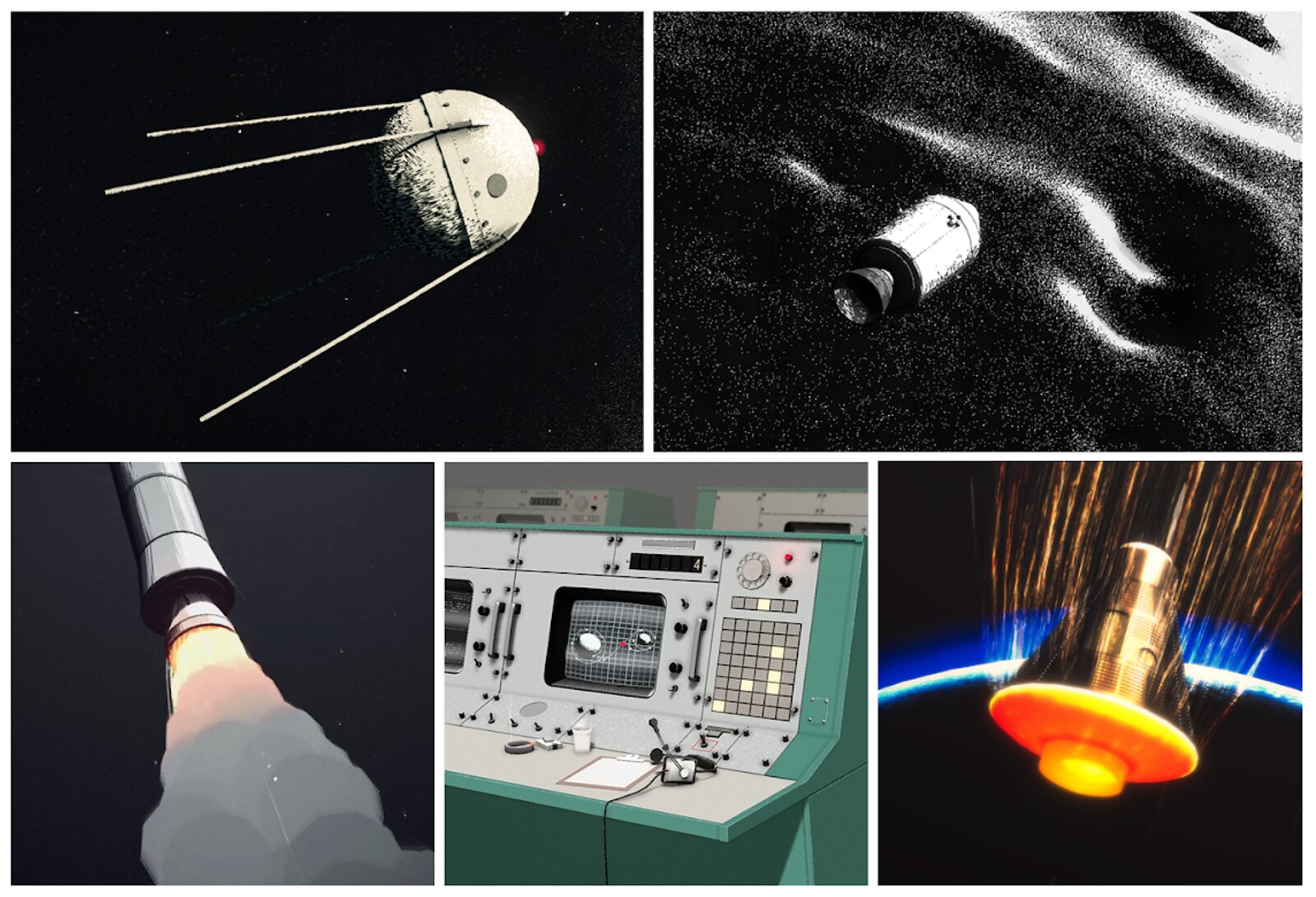Products You May Like
After almost three years in development, we’re thrilled to announce that Heavenly Bodies will be launching on PlayStation 5 and PlayStation 4 on December 7, 2021. We’ve been working hard to make this game everything we’d imagined, and we can’t wait to share it with you. Our new gameplay trailer below hints at some of the varied, alluring and often ridiculous scenarios you’ll find yourselves in, whether playing solo or with a space pal via local co-op.

The art of Heavenly Bodies
Previously, we’ve written about how the game feels to play and what you’ll be doing out there in space. To celebrate the game being so close to release, we thought we’d dive into the reference that inspired us and how Heavenly Bodies came to look the way it does.
Visual direction
The game’s visual style is influenced by mid-century technical illustrations, archival imagery of early space flight exploration and cutaway drawings that allow the viewer to see detailed structures. Our goal has been to create something that appears more like an artist’s interpretation of space rather than striving for realism. The work of Soviet architect and designer Galina Balashova and NASA collaborator illustrator Russ Arasmith has been vital in informing our visual language.
Image credit: Artwork by Russ Arasmith, Date Unknown. NASA
Capturing illustrative qualities in a real-time context
To reproduce this bold, graphical and analogue aesthetic, we first analysed what it was that we needed to effectively reproduce in an interactive, real-time context. The key features we wanted to include were:
● high contrast between highlights, mid-tones and shadows with little blending in between;
● the ability to replicate illustrative techniques such as hatching and stippling;
● grain that feels relative to the scale of the objects in the scene;
● ability to control the roughness of an object;
● texture support for hand painted details.
The results of our initial experiments are below, and we felt they were an early step in the right direction.
Once we’d encapsulated these properties in real-time 3d on smaller objects, we were keen to apply them to larger, playable environments.
Our main considerations in translating this style across to Heavenly Bodies were:
● prioritising the playable space and interactive objects over unnecessary detail or clutter;
● using colour to highlight essential items and different interaction types;
● preferencing analogue technology and large forms that communicate their operation.
Here’s a look at the scenario ‘Data’ in the game, where you can see all of these elements coming together.
Communications Terminal and Operations Manual concepts
The information required to complete the task at hand is delivered from Mission Control via the Communications Terminal in every level. This information arrives as a paper printout which is then added to the Operations Manual carried by the player.
The Operations Manual is informed by NASA handbooks and checklists issued to astronauts for quick reference in stressful situations, of which there are plenty in the game. Preferencing analogue technology over digital, modern and sci-fi is an underlying direction for the game. Below are some early concepts for the clunky Communications Terminal, followed by an example of the materials they dispense in the level ‘Energy’.
Memorabilia reference
Throughout the game we’ve hidden a bunch of special collectable items for players to find and send back to Mission Control to be placed proudly on display. These collectables are our nod to significant achievements in space history, such as Sputnik, the first satellite put into orbit, and the Voyager Golden Record that blasted through the cosmos containing the sounds of our universe, and more, which we’ll leave for you to discover.
The artwork for the PlayStation trophies are our way of acknowledging the efforts of our brave cosmonauts, commemorating their efforts in the form of a physical artefact for players to collect and reflect on—creating their own history of memorable events. Vintage space memorabilia, including stamps, matchboxes, pins and badges, were integral sources of reference, so making our own set of assets felt like a great way to pay tribute to a past era of space exploration.
Our love of historical space illustration extends to every corner of Heavenly Bodies, and we’ve aimed to capture the magic of mid-century graphic illustration wherever possible. For us, this era embodies the early romanticism and optimism of space travel. While loosely set in the late 60s, early 70s, we’ve adapted events and technologies from later decades to create the kinds of scenarios we want players to experience, and we hope you enjoy it.See you in orbit! Heavenly Bodies releases for PS4 and PS5 on December 7, 2021 – you can wishlist the game here.







